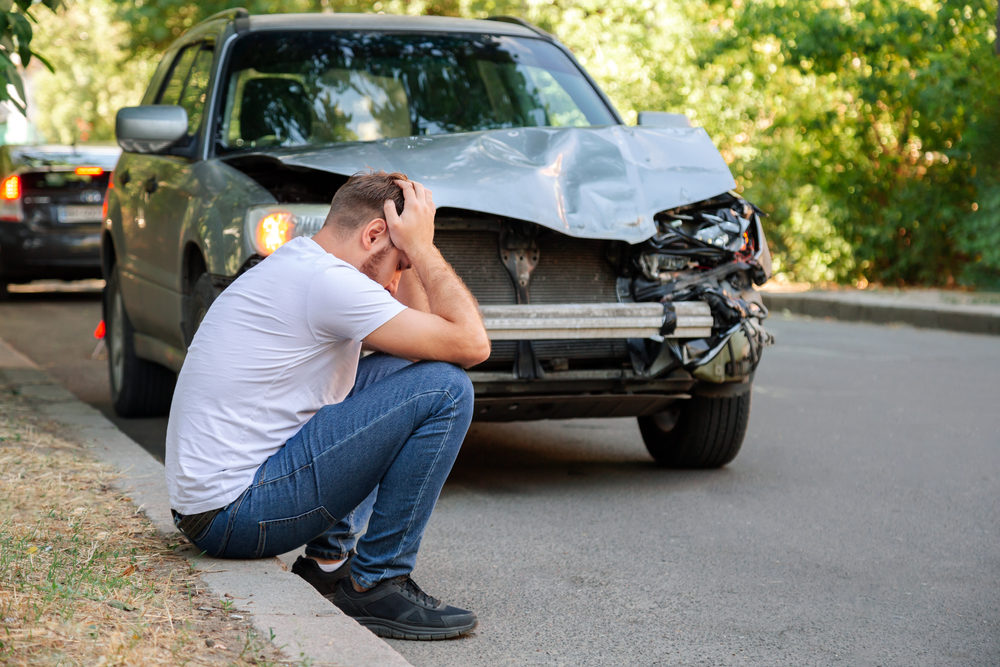
We often have clients struck by an unknown driver that flees the scene. If the police are unable to locate the hit and run driver, clients typically wonder if they can recover compensation for their injuries against an unknown driver. The answer is yes—if you have uninsured motorist coverage. This type of coverage compensates a person who has been hit by another driver that does not have any insurance coverage and also applies when the party causing the crash flees the scene. We go into more detail about uninsured motorist coverage in our article How Does Automobile Insurance Coverage Factor Into A Successful Personal Injury Case?
How Do I Get Compensated as a Victim of a Hit and Run Crash?
First and foremost, you need to have uninsured motorist insurance coverage to recover for personal injuries sustained in a car crash caused by an unknown driver. If you have uninsured motorist coverage (most people do and do not even realize it), you must put your insurance carrier on notice of the accident. You will then need to file a claim against your insurance carrier for the coverage you purchased. The steps in doing this are similar to filing a personal injury claim against a known driver, except the person who injured you is an unknown “John Doe.”
Once you put your insurance carrier on notice of your personal injury claim, you still need to prove liability. Proving liability against an unknown driver (a.k.a. “John Doe”) was further expanded on by the Virginia Supreme Court in Doe v. Houser, 213 Va. 617 (1973). The Houser Court held that a plaintiff still has the burden of proving liability on the part of an unknown driver. We further explain how to prove liability in our article How Do I Prove Liability in a Personal Injury Claim? In short, you need to prove that John Doe caused the collision.
After you put your insurance carrier on notice of your uninsured motorist claim and establish liability on the part of the unknown driver, the next step is to prove your damages. Damages are what you suffered/lost as a result of the crash. Typically, they are costs incurred for medical treatment, pain & suffering caused by the injuries, time missed from work, mental anguish, and inconvenience caused by the crash. We further explain how to prove damages in our article How Do I Prove Damages in a Personal Injury Claim? If you cannot come to a settlement with your insurance carrier or the statute of limitations is beginning to run out, the next step would be to file a lawsuit.
Who Do I Sue?
If you are involved in a car crash with an unknown driver and want to pursue your uninsured motorist coverage benefits in Court, you need to file a lawsuit against a John Doe defendant. “John Doe” is a legal pseudonym for an unknown party. You then must properly serve your insurance carrier that you are seeking coverage pursuant to Virginia Code § 38.2-2206. If you do not properly serve your insurance carrier, it has no legal obligation to pay any judgment or verdict you obtain.
After you properly serve your insurance carrier to recover your uninsured motorist coverage benefits, the matter will proceed against a John Doe defendant in court. Your insurance carrier will have the right to conduct discovery and defend the case if it goes to trial. The matter will proceed against a John Doe defendant. Even though there is an unknown defendant, expect your insurance company to hire an attorney to represent its interests and proceed against you in court.
Notable Differences Between a John Doe Defendant and a Known Defendant
One noteworthy difference between going to trial against a John Doe defendant instead of a known defendant is that juries have a tendency to award more in damages against a John Doe defendant than a known defendant. Someone involved in a hit and run is less sympathetic than someone who pulls over and provides assistance at the scene. The jury will see John Doe’s attorney defending an empty chair and usually awards more because of this.
Additionally, the most you can recover against a John Doe defendant is the maximum amount of your uninsured motorist coverage. There is a clear limit to what you can recover. If you sue a known defendant, there is always the potential to recover more than the known defendant’s liability coverage. However, there are no bad faith laws punishing your insurance carrier for dragging a matter out in court for an uninsured motorist claim. You can read more about why this is important in our article How Does The Lack Of Bad Faith Laws In Virginia Effect Underinsured/Uninsured Motorists?
It is important to note that pursuing an uninsured motorist claim is different for every state, and this article above applies Virginia law to Virginia car insurance policies. The law may be different for out-of-state policies or accidents. If an unknown driver struck you or a loved one, you might be able to pursue an uninsured motorist claim. If you are considering filing a claim, you should consult an experienced car accident attorney to understand your options. At Curcio Law, we have extensive experience representing people hurt by unknown drivers. For more information, call or text us at 703-836-3366, email info@curciolaw.com, or visit www.curciolaw.com.

Justin Curcio joined Curcio Law in January 2020. Justin received his J.D. from St. John’s University School of Law in 2015. After passing the Virginia Bar in 2015, Justin was in-house counsel for an insurance defense firm (Allstate/Esurance/Encompass) for over four years before joining Curcio Law. During law school, he worked for the Nassau County District Attorney’s Office and the law firm of Bartlett, McDonough & Monaghan, LLP. Contact Justin at jcurcio@curciolaw.com.
















Comments for this article are closed.